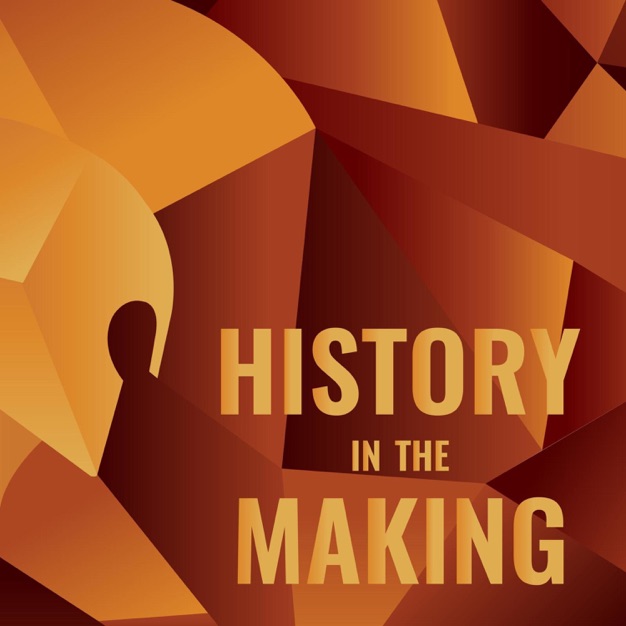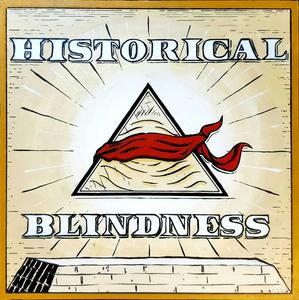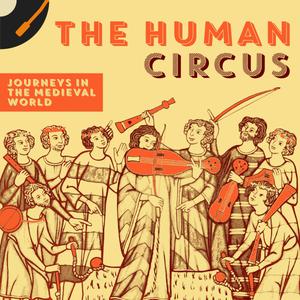
Dig: A History Podcast
Four women historians, a world of history to unearth. Can you dig it?
- 48 minutes 45 secondsGhosting the Patriarchy: Spiritualism and the Nineteenth-Century Women’s Rights Movement
Spiritualism's Place. Episode #4 of 4. In honor of our new book, Spiritualism's Place, we're re-releasing one of our favorite episodes about Lily Dale. Today we're revisiting our exploration of the close association of Spiritualism and the women’s rights movement of the nineteenth century.
Learn more about your ad choices. Visit podcastchoices.com/adchoices
25 November 2024, 1:00 am - 1 hour 12 minutesPlastic Shamans and Spiritual Hucksters: A History of Peddling and Protecting Native American Spirituality Re-Release
Spiritualism's Place. Episode #3 of 4. In honor of our new book, Spiritualism's Place, we're re-releasing one of our favorite episodes about Lily Dale. In the late 20th century, white Americans flocked to New Age spirituality, collecting crystals, hugging trees, and finding their places in the great Medicine Wheel. Many didn’t realize - or didn’t care - that much of this spirituality was based on the spiritual faiths and practices of Native American tribes. Frustrated with what they called “spiritual hucksterism,” members of the American Indian Movement (AIM) began protesting - and have never stopped. Who were these ‘plastic shamans,’ and how did the spiritual services they sold become so popular? Listen to find out!
Find transcripts and show notes at: www.digpodcast.org
Learn more about your ad choices. Visit podcastchoices.com/adchoices
18 November 2024, 1:00 am - 55 minutes 14 secondsJulia’s Bureau: The Temperance Virtuoso, the Father of Journalism, and Life after Death in the Spiritualist Anglo-Atlantic Re-Release
Spiritualism's Place. Episode #2 of 4. Enjoy this re-release of one of our favorite episodes in celebration of our newly released book: Spiritualism's Place: Reformers, Seekers, and Seances in Lily Dale.
For three years before his untimely death on the Titanic, British newspaper man W. T. Stead gathered the bereaved and curious in a room in Cambridge House so they could communicate with the dead. Several psychics, including the blind medium Cecil Husk and materialization medium J. B. Jonson, worked these sessions which had become known as Julia’s Bureau. After Stead’s death, Detroit medium Mrs. Etta Wriedt sought to channel the dead newspaper man. Wriedt was also known to channel a Glasgow-born, eighteenth-century apothecary farmer named Dr. John Sharp. Other frequent visitors include an American Indian medicine chief named Grayfeather, the Welsh pirate Henry Morgan, and a female Seminole Indian named Blossom who died in the Florida everglades as a young child. But the bureau’s most important spirit visitor can also be said to have been the founder of the bureau, Julia herself. Who was Julia? And how do these seances fit into the long history of Spiritualism? Find out today!
Find transcripts and show notes here: www.digpodcast.org
Learn more about your ad choices. Visit podcastchoices.com/adchoices
10 November 2024, 10:28 pm - 47 minutesSpiritualism's Beginning: Kate and Maggie Fox
Spiritualism's Place, Episode #1 of 4: Enjoy this re-release of our episode on Kate and Maggie Fox, the "founders" of Spiritualism. Averill wrote this episode in preparation for writing about the Fox sisters in Chapters 2 & 3 of Spiritualism's Place. This time around, you can listen for the context and history that didn't make it into the book!
Learn more about your ad choices. Visit podcastchoices.com/adchoices
4 November 2024, 12:00 am - 58 minutes 36 secondsKitsune and Kitsunetsuki: A History of Japanese Fox-Witches and Fox Possession
Witches Series. Episode #4 of 4. This episode tells te story of one of Japanese folklore’s most infamous yokai (supernatural beings). The kitsune, “fox-spirit” or “fox-witch” has deep roots, millennias-old, in central Japan. The use of the word spirit conjures ghosts to western minds but the Japanese are using it to mean “supernatural or enlightened being”. This is why kitsune is also translated to fox-witch and, in many ways, this is a more accurate name within the western context. This shapeshifting spirit was believed to be the most cunning of yokais, its abilities only increasing with age. For centuries, kitsune have been suspected of performing kitsune-tsuki or “fox possession,” which were made easier by its ability to shapeshift into the form of a human woman. For this last episode on our 2024 Witches series, we’re tracing the history of Japanese fox-witches and the phenomenon of fox possession.
Find show notes and transcripts at www.digpodcast.org
Learn more about your ad choices. Visit podcastchoices.com/adchoices
30 September 2024, 12:00 am - 55 minutes 19 secondsThe Salem Witch Trials of 1692
Witches, Episode #3 of 4. The Salem witch trials lasted from late February 1692 to May 1693 in eastern Massachusetts Bay Province. This event resulted in the arrest and imprisonment of at least 155 individuals. Of these people, thirty were found guilty, with nineteen meeting their end by hanging. One man suffered a gruesome death by crushing under stones, while five others perished in jail due to harsh conditions. Although modest in scale compared to the extensive witch-hunts in 17th-century Europe, the Salem episode stands as the most severe witch-hunt in American history. It surpassed all previous New England witchcraft trials in terms of accusations and executions. The aftermath of the Salem trials marked a turning point. No further witchcraft convictions occurred in New England after this event. Moreover, the Salem crisis ultimately contributed to the downfall of the Puritan government in Massachusetts, signaling a significant shift in the region's political and social landscape.
Bibliography
Kamensky, Jane. Governing the Tongue: The Politics of Speech in Early New England. Oxford University Press. 1997.
Moyer, Paul. Detestable and Wicked Arts: New England and Witchcraft in the Early Modern Atlantic World. Cornell University Press. 2020.
Norton, Mary Beth. In the Devil's Snare: The Salem Witchcraft Crisis of 1692. Vintage Books. 2003.
Ray, Benjamin C. Satan and Salem : The Witch-Hunt Crisis Of 1692. University of Virginia Press, 2015.
Ulrich, Laurel Thatcher. Good Wives: Image and Reality in the Lives of Women in Northern New England, 1650-1750. Oxford University Press. 1980.
Learn more about your ad choices. Visit podcastchoices.com/adchoices
23 September 2024, 12:17 am - 1 hour 2 minutesSpectral Evidence, Floating Witches, and Angry Neighbors: The Other Witch Panic of 1692
Witches Series. Episode # 2 of 4. In 1692, the unusual behavior of a young girl was explained as the result of the evil trickery of a witch. Soon, people were naming culprits, and those accused were on trial for their very lives. You’re all familiar with the story, right? But today we’re not talking about the famed witch panic that gripped Salem, Massachusetts in 1692 - no, we’re talking about the other witch panic that took place that very same year, 200 miles away in Stamford, Connecticut. What can this concurrent, but very different, witch panic teach us about ideas about witchcraft in colonial New England?
Find transcripts and show notes at: www.dogpodcast.org
Learn more about your ad choices. Visit podcastchoices.com/adchoices
16 September 2024, 12:00 am - 44 minutes 57 secondsLove and Magic: A History of Violence
Witches III, Episode #1 of 4. Magic practitioners - both real and fictional, historical and contemporary - wield many different kinds of magic. Blood and bone magic, necromancy, divination, cleansing magic, manifestation, earth and elemental magic; the list is extensive. But wherever there is magic use, you are likely to find love magic. Spells and incantations to entrap a lover, potions and drugs to enthrall or make one feel amorous - love magic is ubiquitous in our current cultural representations of magic, especially (but not exclusively) when there are women magic-users involved. Curiously, while love magic has been around for millenia, love magic was not always so firmly feminized. And that seems worth digging into.
Bibliography
Laine Doggett, Love Cures: Healing and Love Magic in Old French Romance. (Pennsylvania State UP, 2009).
Christopher Faraone, Ancient Greek Love Magic, (Harvard UP, 2009)
Gyorgy Endre Szonyi, John Dee's occultism : magical exaltation through powerful signs
Jeffrey Watt, “Love Magic and the Inquisition: A Case from Seventeenth-Century Italy,” The Sixteenth Century Journal , Fall 2010, Vol. 41, No. 3 (Fall 2010), 675-689.
Benjamin R. Foster, From Distant Days: myths, tales and poetry of Ancient Mesopotamia, (CDL Press, Maryland, 1995)
Corinne Wieben, “The Charms of Women and Priests: Sex, Magic, Gender and Public Order in Late Medieval Italy,” Gender and History Vol.29 No.1 April 2017, 141–157.
Learn more about your ad choices. Visit podcastchoices.com/adchoices
9 September 2024, 12:00 am - 1 hour 3 minutesHistory of Thin: The Changing Meaning of Thinness in the Modern World
Bodies Series. Episode #3 of 3. The modern history of the body is marked by the coinciding pathologization of fatness AND the elevation of a new thin ideal. But one can make the argument that even after fatness was pathologized (deemed medically or psychologically abnormal), it was not necessarily stigmatized in any systematic way UNTIL its opposite quality- thinness-- took on new and important meanings of its own. In this sense, it’s not fatness whose meaning changes with time so much as that of THINNESS. As was made clear in this episode’s prequel, The History of Fat: The Complex Attitudes Toward Fatness in the Pre-Modern West, fatness has always been complicated- at some times accepted, even admired, and at other times criticized and a source of revulsion. In response to gender crises, technological advancement, and anxieties about modernity, twentieth-century beauty standards came to worship thinness in ways that were completely unheard of in premodern times. Today we tackle the History of Thin.
Find transcripts and show notes at: www.digpodcast.org
Learn more about your ad choices. Visit podcastchoices.com/adchoices
29 July 2024, 12:10 pm - 1 hour 4 minutesThe Battle for Deaf Education: Clashing Methods, Minds, and Cultures in the Nineteenth Century United States
Body Series. Episode #2 of 3. In the mid-nineteenth century, a feud erupted between two camps of prominent public intellectuals and thought-leaders in the United States. The results of this feud affected the education, culture, and lives of generations of Americans. And yet, you have probably never heard of it. One the one side, the manualists, who believed that deaf people should be educated in manual methods in the form of sign language. On the other side, the oralists, who believed that deaf people should not use sign, but instead be educated in how to read lips and vocalize spoken English. It might be easy to see this as a just a schism between two pedagogical perspectives - is it better to teach using this method or that method? But this was about much more than educational approaches - instead, it became about the very place of deaf people in United States society. Thinkers and educators had spent decades of the nineteenth century debating the nature of deafness and the deaf mind: could deaf people think and reason without formalized language? Could they tell right from wrong, or were they animal-like? How might deaf people exist in a civil society if they did not share a common language? Were deaf people a distinct cultural group, or disabled individuals who could be assimilated? Today, we’re talking about the history of deaf people in the United States.
Find transcripts and show notes at: www.digpodcast.org
Learn more about your ad choices. Visit podcastchoices.com/adchoices
22 July 2024, 5:11 pm - 49 minutes 1 secondOne-Sex, Two-Sex, or …?: Thinking About the Sexed Body in History
Bodies, Episode #1 of 3. Historian Thomas Lacquer’s 1992 Making Sex argues that the one sex model dominated ancient and medieval medicine and popular ideas of sex, until, approximately, the Enlightenment, which gradually dispelled the one sex model in favor of the two-sex model--the strict dimorphic binary of sex, male and female, that most people are probably familiar with today. While numerous historians, and particularly historians of the ancient and medieval periods, have challenged the scope and specifics of Lacquer’s thesis, the revolution in gender history that his work prompted is undeniable. To kick off this series on Bodies, we’re going to talk about the history of how sex - or the meaning and value ascribed to genitals - was socially and scientifically constructed and reconstructed in Europe over the last two thousand years.
For a full transcript, bibliography, and more, visit digpodcast.org
Select Bibliography
Judith Butler, Gender Trouble: Feminism and the Subversion of Identity (Routledge, 1990).
Joan Cadden, The Meanings of Sex Difference in the Middle Ages: Medicine, Science, and Culture (Cambridge University Press, 1995)
Helen King, The One-Sex Body on Trial: The Classical and Early Modern Evidence (Routledge, 2013).
Thomas Lacquer, Making Sex: Body and Gender from the Greeks to Freud (Harvard University Press, 1992)
Elizabeth Reis, Bodies in Doubt: An American History of Intersex (John Hopkins Press, 2021)
Learn more about your ad choices. Visit podcastchoices.com/adchoices
15 July 2024, 12:00 am - More Episodes? Get the App
Your feedback is valuable to us. Should you encounter any bugs, glitches, lack of functionality or other problems, please email us on [email protected] or join Moon.FM Telegram Group where you can talk directly to the dev team who are happy to answer any queries.
 In The Past Lane - The Podcast About History and Why It Matters
In The Past Lane - The Podcast About History and Why It Matters
 History in the Making
History in the Making
 Historical Blindness
Historical Blindness
 Human Circus: Journeys in the Medieval World
Human Circus: Journeys in the Medieval World
 Sexing History
Sexing History
 Lady Science Podcast
Lady Science Podcast